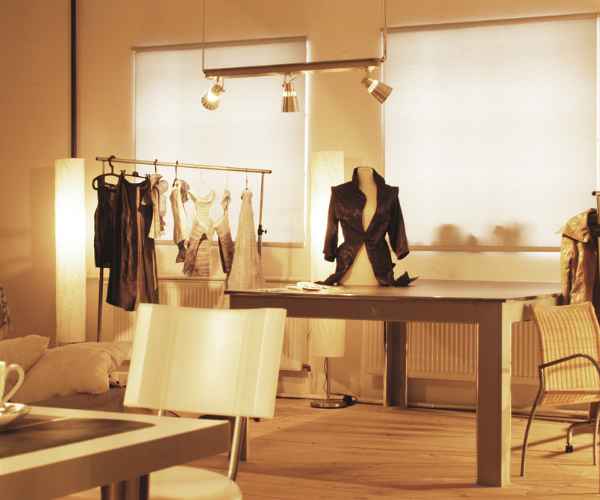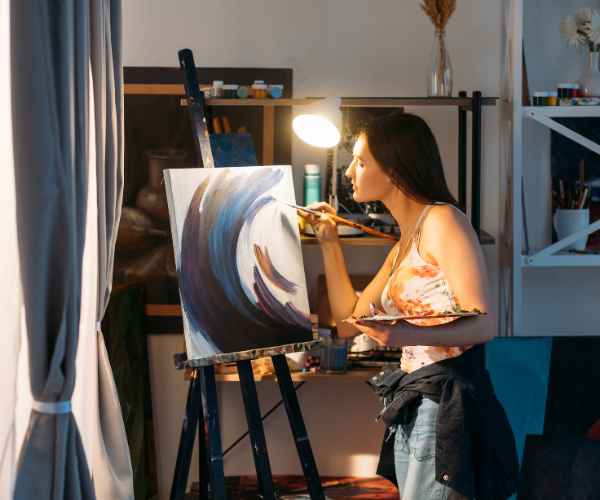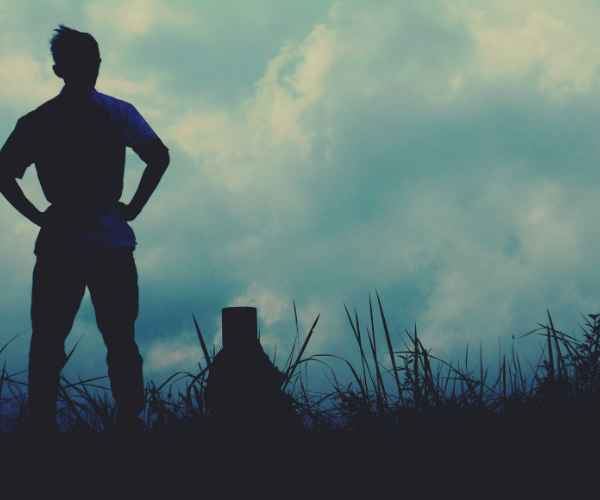Art history has this timeless ability to influence how we create, see, and even interpret the world around us. You can almost think of it as a visual dialogue that stretches across centuries. As an artist today, it’s fascinating to see how much of what we do is shaped by what came before. Art movements, iconic artists, and even the tiniest brushstrokes from past masters all trickle down and find their way into modern creativity, whether we’re conscious of it or not.
Take a moment to think about how many modern artists draw inspiration from centuries-old techniques, themes, and even mistakes. Whether you’re flipping through an art magazine, scrolling through social media, or walking through a gallery, you can feel this connection between the past and the present. There’s something incredibly grounding about knowing that artists like us—just with different tools—were working through the same struggles, asking the same questions about light, color, form, and how to capture the human experience.
For me, there’s something deeply comforting about the fact that the artists we revere today were often misunderstood or underappreciated in their time. Studying their journeys and struggles feels like having a conversation with someone who just gets what it’s like to try to make art that resonates. That’s why looking at art history isn’t just about admiring a beautiful painting; it’s about finding your creative roots and drawing from a well of inspiration that’s much deeper than your immediate surroundings.
When you look at an iconic artist’s work, you’re not just seeing what they painted or sculpted. You’re seeing centuries of thought, technique, and experimentation distilled into something tangible. And the best part? You can take that knowledge and apply it to your own work in ways that feel entirely fresh and modern. In a way, studying art history isn’t just about looking backward; it’s about propelling yourself forward in your own artistic journey.
Art Movements and Their Impact
So, what exactly is an art movement? In simple terms, an art movement is a style or tendency in art that is shared by a group of artists within a specific time period. These movements often reflect the cultural, social, and political environments of their time, and they help to push the boundaries of what art can be. It’s fascinating how each movement builds off the one before it, either in response or in rebellion, shaping the direction of art in unexpected ways.
For example, let’s look at Impressionism. If you’ve ever looked at a painting by Monet or Renoir, you’ve likely noticed the softness, the way the light plays on the surface, and how the subjects seem to shimmer and move. This was a direct reaction to the strict, realistic detail that defined the academic painting of the time. These artists were tired of painting what they saw as stagnant, lifeless portraits and scenes. Instead, they wanted to capture the feeling of a moment—the way light flickers through leaves, how colors change at different times of day, or how water reflects the sky.
Impressionism revolutionized how we see and understand art. Before, a painting was meant to be a window into a scene, as realistic as possible. But Impressionists shattered that idea by showing that art could be about perception—how things look in a fleeting glance, not how they appear when studied closely. They painted quickly, often outdoors, trying to capture the world as they saw it in that instant.
I remember the first time I stood in front of Monet’s Water Lilies series at a museum. It was overwhelming—not because of the detail, but because of the lack of it. The way the colors blended, the loose brushstrokes—it felt more like being in a dream than in a specific location. That’s when I truly understood how Impressionism wasn’t just about depicting a landscape; it was about recreating an emotional experience through color and light. And the beauty is, those same techniques can be applied today, even in something as modern as digital painting or photography. That’s the power of an art movement—it redefines what’s possible, and it sticks with us.
Exploring Iconic Artists Through Time
Renaissance Masters and Their Techniques
Now, when we talk about iconic artists, it’s hard not to start with the Renaissance. This period was a massive leap forward in terms of technical skill and innovation. Artists like Leonardo da Vinci and Michelangelo didn’t just paint; they experimented, invented, and pushed the boundaries of what art could achieve.
Take Leonardo da Vinci, for example. Everyone knows about the Mona Lisa and the Last Supper, but what really blows me away is how innovative he was in terms of technique. He didn’t just paint faces; he studied anatomy, dissection, and geometry to ensure that every muscle and every shadow was perfect. His use of sfumato (a technique of blending colors and tones so subtly that you can’t see where one ends and the other begins) was groundbreaking. It allowed him to create a soft, almost mystical atmosphere around his subjects, especially in the Mona Lisa. You get the sense that there’s more happening in the painting than you can see at first glance.
I think about this whenever I’m working on a project that feels like it needs more depth, more layers. Studying how Da Vinci created that sense of mystery and emotion with such subtlety is a lesson in patience and precision. I’ve learned that sometimes the smallest details—a shadow here, a highlight there—can completely change the feel of a piece. It’s about understanding that art isn’t just what’s on the surface; it’s about the layers you build up to create something that feels alive.
And then there’s Michelangelo. I mean, just look at the Sistine Chapel. That ceiling is legendary, not just because of its sheer scale but because of the emotion and storytelling in every panel. It’s the kind of art that makes you stop in your tracks. What’s interesting is that modern muralists often look to Michelangelo for inspiration when tackling large-scale projects. His ability to break down massive stories into visual segments is something we still do today—whether it’s in street art, installation art, or even in digital mediums.
Baroque Drama and Emotional Realism
Moving from the Renaissance to the Baroque period, we find a whole different level of emotional intensity, especially with artists like Caravaggio. This guy was all about the drama. He used chiaroscuro, which is the contrast of light and dark, to create intense emotional moments in his paintings. His works often feel more like a scene from a play than a static image. There’s so much action and energy in his compositions, you can almost hear the characters whispering or shouting.
What’s fascinating about Caravaggio’s style is how it translates into modern interpretations of realism. Artists today, especially those working in photography and cinema, often borrow from his use of light and shadow to create mood and tension. I remember working on a photography series a while back where I wanted to evoke this same sense of emotional intensity. I played around with lighting setups, using sharp contrasts between light and shadow to make the subjects pop. It’s amazing how much you can say with just a little light in the right place.
Then there’s Rembrandt, another Baroque master known for his introspective self-portraits. What I love about Rembrandt is how he wasn’t afraid to show vulnerability. His self-portraits aren’t about looking perfect or glamorous—they’re about showing the truth of aging, fear, and doubt. It’s raw and human in a way that resonates even now. You can see that same vulnerability in so many modern works, whether it’s in portrait photography or contemporary painting. That emotional realism is something we strive for when trying to connect with our audience through our art. It’s about showing what’s real, not just what’s beautiful.
Impressionist Innovations in Light and Color
Impressionism has always fascinated me, especially because it was so rebellious for its time. These artists weren’t interested in painting what the world looked like in perfect detail; they wanted to show how the world felt. I always think about Claude Monet when it comes to capturing light and color in ways that still resonate with artists today. Monet’s approach to painting outdoors, or plein air, was groundbreaking. He would set up his easel in front of the very scenes he was capturing, often painting the same subject at different times of day just to study the shifting light. I remember the first time I tried plein air painting myself—it’s so much harder than it seems! The light changes so fast, and you’re forced to work with that sense of immediacy. It’s stressful and beautiful at the same time, which, I guess, is the whole point.
What’s interesting is that even though Monet was painting fields and water lilies, his technique is incredibly relevant to modern landscape artists. You can see his influence in photography, digital art, and even cinema today. The idea of capturing the fleeting effects of light—the soft transition between day and dusk, for instance—remains a central theme in contemporary works. It’s like we’re all still chasing that elusive moment of perfect light, just as Monet did.
Another Impressionist who continually surprises me is Edgar Degas. Now, Degas wasn’t your typical plein air painter; in fact, he preferred working indoors. But what he did with his ballet scenes was absolutely incredible. Degas wasn’t just painting ballerinas; he was capturing movement in a way that felt timeless. When you look at his dancers, you can almost see them shifting their weight or adjusting their posture mid-step. His work gives this snapshot feeling, freezing a moment in time but still showing the fluidity of it.
I remember being at a dance recital and thinking about how similar the movements were to the ones Degas painted all those years ago. The precision, the grace—it’s all still there, and you can feel it through his work. That sense of capturing motion has even bled into modern photography and film, where the focus is on freezing a moment of movement while still conveying its energy. There’s a direct line from Degas’ ballet scenes to modern artists who seek to immortalize fleeting moments, whether they’re working with paint, cameras, or digital media. It’s a reminder that art’s relationship with movement and time is something we’re all still trying to perfect.
Modernist Breakthroughs and Abstract Expressionism
When I first encountered Picasso’s work, I’ll be honest—I didn’t get it. His early Cubist paintings, with their fragmented perspectives and almost harsh geometric lines, felt confusing. But over time, I realized that what Picasso was doing wasn’t just about aesthetics; it was about changing the way we view reality. Cubism allowed Picasso to show multiple perspectives of a single object at once, which was radical. Imagine looking at someone’s face from the front and the side simultaneously—it’s a bizarre concept, but Picasso made it work.
What I find so powerful about Picasso’s approach is how it has influenced so much of modern art, especially in terms of how we think about perspective. In digital art and graphic design today, we see a lot of fragmented perspectives—images that deconstruct reality and force us to reassemble them in our minds. You see this not only in painting but also in fields like architecture, where buildings play with angles and viewpoints in a way that feels distinctly Cubist. Picasso’s legacy is essentially about breaking down the world and inviting us to put it back together in a way that’s unique to our experience.
And then there’s Wassily Kandinsky, whose abstract compositions are still some of the most emotionally charged works I’ve ever seen. Kandinsky believed that colors and shapes could evoke emotions just as powerfully as music or literature. His paintings are less about representing reality and more about making you feel something deep within. I remember standing in front of one of his works, “Composition VIII,” and feeling almost overwhelmed by the chaos of it, but in a good way—like it was reaching into my subconscious and stirring something I couldn’t quite explain.
What’s incredible is how this idea—that abstract forms can communicate on a purely emotional level—has carried over into contemporary art. Think about how many modern pieces you’ve seen that are just splashes of color or simple shapes, yet they provoke such strong reactions. It’s because Kandinsky paved the way for us to understand that art doesn’t have to be literal to be meaningful. Whether you’re working with a brush, a camera, or even 3D software, there’s something powerful about allowing abstract forms and colors to speak directly to the emotions of your audience. His influence is everywhere, from digital art interfaces to the vibrant palettes you see in advertising and media today.
Drawing Inspiration from Art History Today
Techniques for Incorporating Historical Inspiration
The best part about studying art history, at least in my experience, is realizing that you don’t have to copy the past to learn from it. The techniques, themes, and styles developed over centuries are like a toolbox that you can dip into whenever your creativity feels stuck. One of the easiest ways to incorporate historical inspiration into your modern practice is to start by looking at the technical aspects of the art that moves you.
For instance, I’ve always been drawn to Van Gogh’s work. The energy in his brushstrokes is something that’s instantly recognizable, almost like a fingerprint. He wasn’t just painting a landscape; he was injecting it with life, emotion, and a sense of urgency. One technique that I’ve found especially useful is his way of using thick, swirling strokes to create texture and movement. Even in digital painting, where brushstrokes are simulated, you can mimic that same vitality by experimenting with texture brushes and layering techniques. It’s not about copying van Gogh’s style, but about finding that same energy in your own work.
Another technique that I often recommend, especially to newer artists, is to play with light and shadow in the way Renaissance artists did. The way they built up layers to create a luminous quality in their work can be adapted into almost any medium. In digital art, for example, using layers to slowly build up light and shadow, much like how a classical artist would glaze oils, can give your work depth and dimension. It’s amazing how something as simple as understanding chiaroscuro (thanks to Caravaggio) can elevate a piece, making it more dynamic and emotionally impactful.
One last thing I always find useful is studying composition from historical works. Whether it’s the balanced, triangular compositions of Renaissance pieces or the chaotic, sprawling forms in Baroque art, understanding how artists organized space on a canvas can make a huge difference in your own work. When I’m feeling stuck, I’ll sometimes take a famous painting, break it down into simple shapes, and try to figure out why it works. What makes the viewer’s eye travel in a certain direction? What keeps the image balanced even when there’s a lot going on? These are the kinds of lessons that transcend time and medium, offering endless opportunities to adapt them into whatever you’re creating today.
FAQs
How can studying art history improve my own artistic style?
I’ve always found that studying art history is like unlocking this massive treasure chest of techniques, stories, and inspiration. I remember the first time I really dove into Renaissance art. It wasn’t just about admiring how beautifully Michelangelo could paint a figure, but about understanding why he chose to paint the way he did. Once you start looking at art history through that lens, it becomes a tool rather than just something to admire. For example, when I look at the use of light in Caravaggio’s paintings, I think about how I can apply similar contrasts in my own work, whether I’m working in oils or digitally.
One of the biggest takeaways from studying past artists is that you start to see how they solved visual problems. If you’re struggling with composition, look at how masters like Rembrandt created balance in chaotic scenes or how the Impressionists used loose, broad strokes to evoke emotions rather than details. It’s like taking a master class from some of the greatest creatives in history. And I know it sounds a bit daunting at first, but you’ll find that by studying these works, your own style starts to evolve naturally. You learn techniques that you might not have even thought of, and slowly you integrate them into your own art without losing your unique voice.
Which art movements are most relevant to contemporary art?
I love this question because it shows how connected art is across time. You might think that modern art is miles apart from something like the Baroque or Classical periods, but the reality is that we’re always pulling from these past movements. Right now, for instance, the Impressionists feel particularly relevant. Their focus on light, color, and atmosphere resonates with contemporary artists, especially those working in photography and digital art. I think it’s because the way we process imagery now—through filters, effects, and even social media feeds—shares a lot in common with how the Impressionists broke away from traditional, realistic portrayals to capture fleeting moments and feelings.
Another movement that still holds a lot of sway is Abstract Expressionism. The raw emotion and freedom in artists like Jackson Pollock or Mark Rothko can be seen in modern art forms ranging from street murals to conceptual installations. There’s something about that unfiltered energy that resonates with artists today who are trying to push boundaries and break conventions, much like the Abstract Expressionists did. And if you think about contemporary art in terms of the emotions it evokes—whether through minimalism, digital formats, or performance art—you’ll see echoes of what these movements were trying to achieve.
How do I balance homage to iconic artists with developing my unique style?
This is such a personal question because I think every artist struggles with finding that balance between honoring the greats who came before and forging your own path. It’s natural to be influenced by artists you admire, and honestly, I think that’s part of the growth process. I remember when I first started painting, I was obsessed with Van Gogh. His brushstrokes, his use of color—it was all I wanted to emulate. But over time, I realized that while Van Gogh could inspire me, I needed to take what I loved about his work and make it my own.
One way to find that balance is to study the techniques of iconic artists, but then challenge yourself to apply them in a way that speaks to your vision. For instance, you might love how Rembrandt uses light and shadow (chiaroscuro), but experiment with that technique in a completely different subject matter or medium. It’s about absorbing what you love but not getting stuck in it. Every artist takes inspiration from somewhere—Picasso famously said, “Good artists borrow, great artists steal”—but what makes your work unique is how you interpret those influences.
Conclusion
Studying art history is, without a doubt, one of the most transformative things you can do as an artist. I know from personal experience that the more I learned about different movements and artists, the more confident I became in my own style. It’s almost like you’re building this internal library of knowledge and techniques that you can draw from whenever you need to.
I encourage you to dive into art history not just as an academic exercise but as a way to fuel your creativity. Whether you’re painting, drawing, working digitally, or even sculpting, there’s something to learn from the masters that came before us. Explore different art movements, get curious about iconic artists, and don’t be afraid to experiment with their techniques in your own work. The goal isn’t to copy but to find inspiration and adapt it to your personal style.
So, keep exploring, keep creating, and remember that art is a journey. Each new discovery in art history is a stepping stone toward finding your unique voice. And trust me, the more you dig into the past, the more fuel you’ll have to move forward in your own creative practice.




